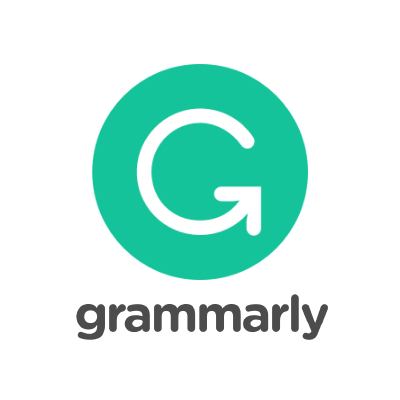Development of Learning Materials on Classification of Living Things Topic Based on Science Literacy and Local Wisdom
Abstract
Keywords
Full Text:
PDFReferences
Alfian, D. W., & Sudarma, K. (2014). Peningkatan Hasil Belajar Siswa melalui Model Pembelajaran Kooperatif tipe Student Team Achivement Division pada Mata Pelajaran Mengelola Sistem Kearsipan Kelas XI Administrasi Perkantoran Di SMK Taman Siswa Kudus. Economic Education Analysis Journal, 3(1), 99–103. http://journal.unnes.ac.id/sju/index.php/eeaj
Arikunto, S. (2009). Prosedur Penelitian Suatu Pendekatan Praktik. Rineka Cipta.
Asrul, Ananda, R., & Rosnita. (2015). Evaluasi Pebelajaran. Citapustaka Media.
Betari, M. E., Yanthi, N., & Rostika, D. (2016). Peningkatan kemampuan Literasi Sains Siswa Melalui Penerapan Pembelajaran Berbasis Masalah pada Pembelajaran IPA di SD. Antologi UPI, 1–17.
Borg, W. R., & Gall, M. D. (1983). Educational Research: An Introduction, Fifth Edition. Longman.
Borich, G. D. (1994). Observation skill for effective teaching (Second). Macmillan Publishing Company.
Chiappetta, E. L., Sethna, G. H., & Fillman, D. A. (1991). A quantitative analysis of high school chemistry textbooks for scientific literacy themes and expository learning aids. Journal of Research in Science Teaching, 28(10), 939–951.
https://doi.org/10.1002/tea.3660281005
Ernawati, I., & Sukardiyono, T. (2017). Uji kelayakan media pembelajaran interaktif mata pelajaran administrasi server. Elinvo (Electronics, Informatics, and Vocational Educational), 2(2), 204–210.
Harahap, S. H. (2020). Efektivitas Lembar Kerja Peserta Didik (LKPD) Berbasis Literasi Sains untuk Meningkatkan Kemampuan Literasi Sains pada Materi Sistem Pencernaan Manusia. Bedelau: Journal of Education and Learning, 1(1), 82–88.
Hidayati Fitria, & Julianto. (2018). Penerapan Literasi Sains dalam Pembelajaran IPA di Sekolah Dasar untuk Meningkatkan Kemampuan Berpikir Kristis Siswa dalam Memecahkan Masalah. Seminar Nasional Pendidikan, 180–184.
Jones, L. R., Wheeler, G., & Centurino, V. A. (2015). TIMSS 2015 science framework. TIMSS.
Kurnia, F., Zulherman, & Fathurrohman, A. (2014). Analisis Bahan Ajar Fisika SMA Kelas XI di Kecamatan Indralaya Utara Berdasarkan Kategori Literasi Sains. Jurnal Inovasi Dan Pembelajaran Fisika, 1(1).
Majid, A. (2016). Strategi Pembelajaran. PT Remaja Rosda Karya.
OECD. (2013). Framework PISA 2015. OECD. http://www.oecd.org/pisa/pisaproduct/pisa2015/101092841.pdf
OECD. (2016). Assessment and Analytical Framework: Science, Reading, Mathematic, dand Financial Literacy. OECD Publishing.
OECD. (2019). Result from PISA 2018 (Volume I-III). OECD.
Rahayu, S. (2014). Revitalisasi science approach dalam kurikulum 2013 untuk meningkatkan literasi sains: Tantangan dan harapan. Prossiding Seminar Nasional Kimia Dan Pengembangan.
Richey, R. C., & Klein, J. D. (2007). Design and Development Research: Methods, Strategies and Issues. Lawrence Erlbaum Associates, Publishers.
Setiawan, B., Innatesari, D. K., Sabtiawan, W. B., & Sudarmin. (2017). The development of local wisdom-based natiral science module to improve science literation of students. Jurnal Pendidikan IPA Indonesia, 6(1), 49–54. https://doi.org/10.15294/jpii.v6i1.9595
Silalahi, A. (2017). Develpment research (penelitian pengembangan) dan research & development (penelitian & pengembangan) dalam bidang pendidikan/pengembnagan. Seminar &Workshop Penelitian Disertasi, 1–14.
Sumarti, S., Rahayu, Y. S., & Madlazim, M. (2017). Pengembangan Perangkat Pembelajaran Berbasis Inkuiri Terbimbing Untuk Melatih Literasi Sains Siswa. JPPS (Jurnal Penelitian Pendidikan Sains), 5(1), 822–829. https://doi.org/10.26740/jpps.v5n1.p822-829
Thiagajaran, S., Semmel, D. S., & Semmel, M. I. (1974). Instructional Development for Training Teacher of Exceptional Children. National Center for Improvement Educational System.
Tias, I. W. U. (2017). PENERAPAN MODEL PENEMUAN TERBIMBING UNTUK MENINGKATKAN HASIL BELAJAR IPA SISWA SEKOLAH DASAR. DWIJA CENDEKIA: Jurnal Riset Pedagogik, 1(1), 50–60. https://doi.org/10.20961/jdc.v1i1.13060
Toharuddin, U. H., Hendrawati, S., & Rustaman, A. (2011). Membangun Literasi Sains Peserta Didik. Humoniora.
Trianto. (2007). Model-model Pembelajaran Inovatif Berorientasi Konstruktivistik. Prestas Pustaka.
Wilkinson, J. (1999). A Quantitive Analysis of Physics Textbooks for Scientific Literacy Themes. Research in Science Education, 29(3), 385–399.
DOI: https://doi.org/10.20527/i.v3i1.7528
Refbacks
- There are currently no refbacks.



.png)

